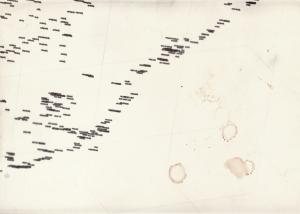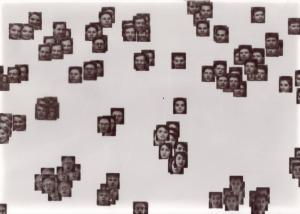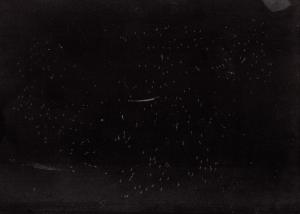Containers for Invisibilia
C-prints of AI research diagrams exposed with a computer screen. 2022 417 ppm
Much of science engages with the unseeable. It becomes visible through its containers: when it speeds through miles-long accelerators buried beneath Switzerland; when it is trapped in test tubes or gas cylinders; when it is pointed-at with telescopes. How does one capture the distinct aesthetics of machine learning/artificial intelligence (ML/AI) research, conducted in nondescript offices that could just as well house any other white-collar occupation?
Using my computer screen, I expose photosensitive paper with diagrams and data visualizations taken from AI research publications.
Developed by hand in my bathtub, these laptopograms capture the material practice of AI research in silver crystals, returning a physical dimension to the digital artifacts. When my fingernails scratch over a print in the chemical bath, they leave a mark. I am reminded that it is always a human hand wielding the data and algorithms which make “intelligent” computers.
Doing AI research means engaging with invisible mathematical spaces, often intuitively or through diagrams, under the veil of scientific objectivity. This work is not solely happening in equations. The researchers I’ve met during a two-year residency in Yann LeCun’s lab at NYU rely heavily on drawing and diagramming, various analogies and intuitions, and a vivid imagination for what lies beyond the three dimensions we can easily understand.
The series alludes to the ways the world is abstracted in AI research, both visually and mathematically, and draws a connection to the role of the scientists' embodied subjectivity in “making AI”.
Some of the images are freely available as stock photos at Better Images of AI, a collaboration of We and AI, BBC R&D, and Leverhulme Centre for the Future of Intelligence.




